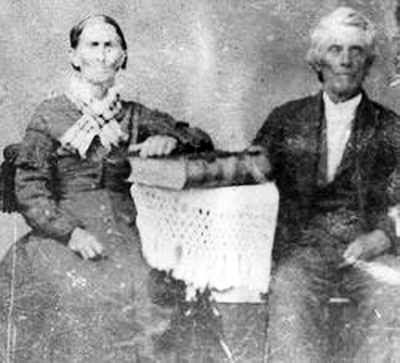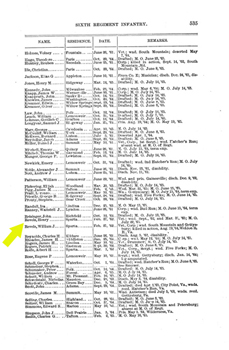Local History Topics
Cheyenne Valley
Museum Notes
by Kristen Parrott, curator
for the 3/7/ 2012 newspapers
At the start of the Civil War, federal law prevented black men from serving in the U.S. military. Congress began to make exceptions to this law in June of 1862, and the Emancipation Proclamation of January 1, 1863, stated clearly that African Americans could serve in the military.
The Bureau of Colored Troops was established a few months later, in May of 1863. Wisconsin supplied one unit of black soldiers, Company F of the 29th Regiment of United States Colored Troops. The military was segregated, and the "colored troops" were under the auspices of the federal government, not the state governments, so "Wisconsin" is not part of the unit's name. Co. F of the 29th U.S.C.T. consisted mainly of black men from Illinois and Missouri who served as paid substitutes for white men from Wisconsin.
We have found a Vernon County connection with Co. F, in the Revels family of Town of Forest. Mycajah and Morning Revels, pioneers of the Town of Forest, had at least three descendants who served in this company: son-in-law Alfred Weaver, grandson Aaron Roberts, and grandson-in-law Charles Allen. Co. F was formed in 1864 and served most notably in the Battle of the Crater, Petersburg, Virginia.
Not all "colored" soldiers served in the U.S. Colored Troops. In the Memoirs of Vernon County, published in 1907, the chapter on Town of Forest ends with the following note: "The town of Forest has a settlement of colored people, who have always been recognized as good citizens. Two of their number served in Company K of the Sixth Wisconsin infantry during the civil war, and they were faithful soldiers, each of them receiving wounds in battle."
None of these "colored people" are mentioned by name in the book, despite being patriots and pioneers. It is likely that the soldiers referred to in this passage are two of Mycajah Revels' sons, Henry and William. Mycajah and Morning Revels were a multi-racial couple, and apparently the U.S. military did not consider their sons "colored" (although the census records list them as such). Consequently, they were not required to serve in the Colored Troops.

Morning and Mycajah Revels.
Instead, Henry and William served in the 6th Wisconsin, which was a part of the famous Iron Brigade. Both were wounded at South Mountain, Maryland, on September 14, 1862, at the battle that earned their brigade its nickname. William was wounded again at Gettysburg in 1863, and then killed in action at Weldon Railroad Station, Virginia, in 1864. Henry also received a second wound, in 1865, but survived the war. The other three Revels sons served in other units.

Roster of the WI 6th Regiment listing the Revels brothers.
As you can see, this is a complicated topic, based on the shifting and subjective definitions of race. The research we do throughout this Civil War sesquicentennial will no doubt uncover more of these interesting stories.

 MENU
MENU